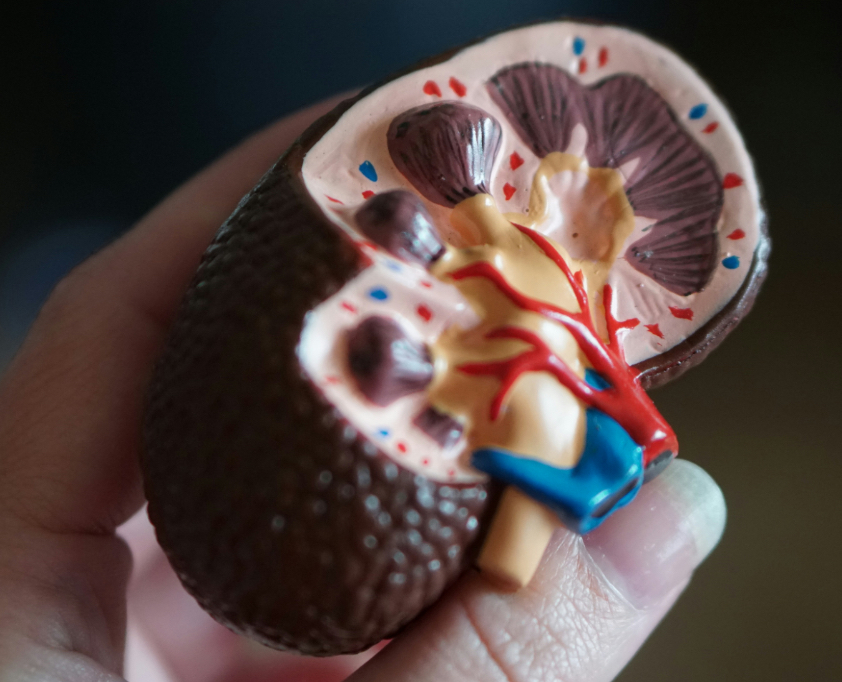Acetazolamide and certain other drugs can cause metabolic acidosis, which may be classified as high anion gap (AG) or non-anion gap (non-AG) based on the underlying mechanism. Below, I’ll explain acetazolamide’s role, other drugs causing metabolic acidosis, and how to differentiate between high AG and non-AG acidosis, including relevant clinical context.
Metabolic Acidosis Overview
- Definition: A decrease in blood pH due to reduced bicarbonate (HCO₃⁻) levels or accumulation of acid.
- Anion Gap (AG): Calculated as:AG=Na+−(Cl−+HCO3−)AG = \text{Na}^+ – (\text{Cl}^- + \text{HCO}_3^-)
AG = \text{Na}^+ - (\text{Cl}^- + \text{HCO}_3^-)- Normal AG: ~8–12 mEq/L (varies by lab).
- High AG acidosis: Caused by accumulation of unmeasured anions (e.g., lactate, ketones).
- Non-AG acidosis: Caused by bicarbonate loss or chloride gain, maintaining a normal AG.
Acetazolamide and Metabolic Acidosis
- Mechanism:
- Acetazolamide is a carbonic anhydrase inhibitor used for glaucoma, altitude sickness, and edema.
- It inhibits carbonic anhydrase in the proximal tubule of the kidney, reducing bicarbonate reabsorption.
- This leads to bicarbonate loss in urine, causing a non-anion gap metabolic acidosis (hyperchloremic acidosis).
- Type: Non-AG acidosis.
- The loss of HCO₃⁻ is balanced by increased chloride (Cl⁻) reabsorption to maintain electroneutrality, keeping the AG normal.
- Clinical Features:
- Mild acidosis (HCO₃⁻ typically 15–20 mEq/L).
- Hyperchloremia (elevated Cl⁻).
- Compensatory respiratory alkalosis (hyperventilation, low PCO₂).
- Common in prolonged use or high doses (e.g., >250 mg/day).
- Context:
- Often seen in patients on acetazolamide for glaucoma, altitude sickness, or as a diuretic.
- Acidosis is usually well-tolerated but may cause fatigue, confusion, or dyspnea in severe cases.
Other Drugs Causing Metabolic Acidosis
1. Drugs Causing Non-Anion Gap Metabolic Acidosis
These drugs typically cause bicarbonate loss or chloride retention, leading to hyperchloremic acidosis.
- Other Carbonic Anhydrase Inhibitors:
- Topiramate: An anticonvulsant with weak carbonic anhydrase inhibition, causing bicarbonate loss similar to acetazolamide.
- Zonisamide: Another anticonvulsant with similar effects.
- Amphotericin B:
- Causes distal renal tubular acidosis (RTA) by damaging renal tubules, impairing H⁺ secretion and HCO₃⁻ reabsorption.
- Results in non-AG acidosis with hypokalemia.
- Cholestyramine:
- A bile acid sequestrant that can bind HCO₃⁻ in the gut, leading to mild non-AG acidosis.
- Lithium:
- Rarely causes distal RTA by impairing renal acid excretion, leading to non-AG acidosis.
- Saline Infusions (Large Volumes):
- High chloride content in 0.9% saline can cause hyperchloremic acidosis by diluting HCO₃⁻ and increasing Cl⁻ relative to Na⁺.
2. Drugs Causing High Anion Gap Metabolic Acidosis
These drugs lead to accumulation of endogenous or exogenous acids, increasing the AG.
- Metformin:
- Associated with lactic acidosis, especially in renal impairment or overdose.
- Mechanism: Inhibits mitochondrial respiration, increasing lactate production.
- High AG due to elevated lactate levels.
- Nucleoside Reverse Transcriptase Inhibitors (e.g., Zidovudine, Stavudine):
- Cause mitochondrial dysfunction, leading to lactic acidosis.
- High AG acidosis, often severe.
- Propylene Glycol (Solvent in IV Drugs, e.g., Lorazepam, Diazepam):
- Metabolized to lactate and pyruvate, causing lactic acidosis.
- Common in prolonged high-dose infusions (e.g., in ICU settings).
- High AG due to lactate accumulation.
- Salicylates (Aspirin Overdose):
- Cause lactic acidosis (by uncoupling oxidative phosphorylation) and ketoacidosis (in severe cases).
- High AG acidosis, often mixed with respiratory alkalosis due to salicylate-induced hyperventilation.
- Methanol and Ethylene Glycol:
- Toxic alcohols metabolized to formic acid (methanol) or glycolic/oxalic acid (ethylene glycol).
- High AG acidosis due to these acidic metabolites.
- Often accompanied by osmolar gap and severe toxicity.
- Isoniazid:
- Can cause lactic acidosis by inhibiting lactate metabolism, especially in overdose.
- High AG acidosis, often with seizures.
- Linezolid:
- Rarely causes lactic acidosis due to mitochondrial toxicity with prolonged use.
- High AG acidosis.
Differentiating High AG vs. Non-AG Acidosis
To determine the type of acidosis caused by a drug, follow these steps:
- Confirm Metabolic Acidosis:
- Arterial blood gas (ABG): Low pH (<7.35) and low HCO₃⁻ (<22 mEq/L).
- Check for compensatory respiratory response (low PCO₂).
- Calculate Anion Gap:
- Use: AG=Na+−(Cl−+HCO3−)AG = \text{Na}^+ – (\text{Cl}^- + \text{HCO}_3^-)
AG = \text{Na}^+ - (\text{Cl}^- + \text{HCO}_3^-). - High AG (>12 mEq/L): Suggests accumulation of acids (e.g., lactate, ketones, toxic metabolites).
- Normal AG (8–12 mEq/L): Suggests HCO₃⁻ loss or Cl⁻ gain.
- Use: AG=Na+−(Cl−+HCO3−)AG = \text{Na}^+ – (\text{Cl}^- + \text{HCO}_3^-)
- Measure Additional Labs:
- Lactate: Elevated in high AG acidosis (e.g., metformin, propylene glycol).
- Ketones: Positive in ketoacidosis (e.g., salicylates).
- Serum Osmolality: Elevated osmolar gap in methanol/ethylene glycol poisoning.
- Urine pH and Electrolytes: Useful in non-AG acidosis (e.g., high urine pH in RTA from amphotericin B).
- Clinical Context:
- Review medications, dose, duration, and comorbidities (e.g., renal failure increases risk of metformin-induced lactic acidosis).
- Consider mixed acid-base disorders (e.g., salicylates causing high AG acidosis + respiratory alkalosis).
Key Examples
- Acetazolamide:
- Non-AG acidosis (HCO₃⁻ loss, high Cl⁻, normal AG).
- Example labs: pH 7.32, HCO₃⁻ 18 mEq/L, Cl⁻ 110 mEq/L, AG 10 mEq/L.
- Metformin Overdose:
- High AG acidosis (lactate accumulation).
- Example labs: pH 7.15, HCO₃⁻ 10 mEq/L, lactate 8 mmol/L, AG 20 mEq/L.
- Amphotericin B:
- Non-AG acidosis (distal RTA, low K⁺, high urine pH).
- Example labs: pH 7.30, HCO₃⁻ 16 mEq/L, Cl⁻ 108 mEq/L, AG 12 mEq/L, K⁺ 3.0 mEq/L.
Management Principles
- Non-AG Acidosis (e.g., Acetazolamide):
- Stop or reduce the offending drug if possible.
- Administer oral or IV bicarbonate for severe acidosis (pH <7.2 or HCO₃⁻ <15 mEq/L).
- Correct electrolyte imbalances (e.g., K⁺, Mg²⁺).
- High AG Acidosis (e.g., Metformin, Methanol):
- Treat the underlying cause (e.g., hemodialysis for metformin or methanol poisoning).
- Supportive care: IV fluids, bicarbonate if pH <7.1, and address lactate or toxin removal.
- Specific antidotes (e.g., fomepizole for methanol/ethylene glycol).
Summary
- Acetazolamide: Causes non-AG metabolic acidosis via bicarbonate loss in urine.
- Non-AG Acidosis Drugs: Topiramate, amphotericin B, lithium, cholestyramine, saline infusions.
- High AG Acidosis Drugs: Metformin, salicylates, methanol, ethylene glycol, propylene glycol, isoniazid, linezolid, nucleoside analogs.
- Diagnosis: Use AG calculation, lactate, ketones, and clinical context to differentiate.
- Management: Stop the drug, correct acidosis, and treat underlying causes.


Leave a Reply